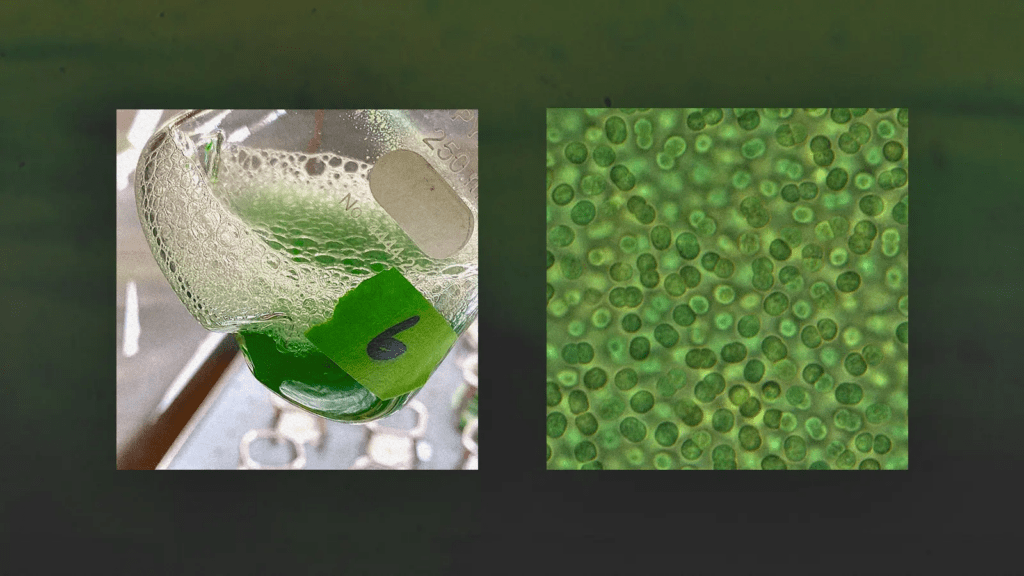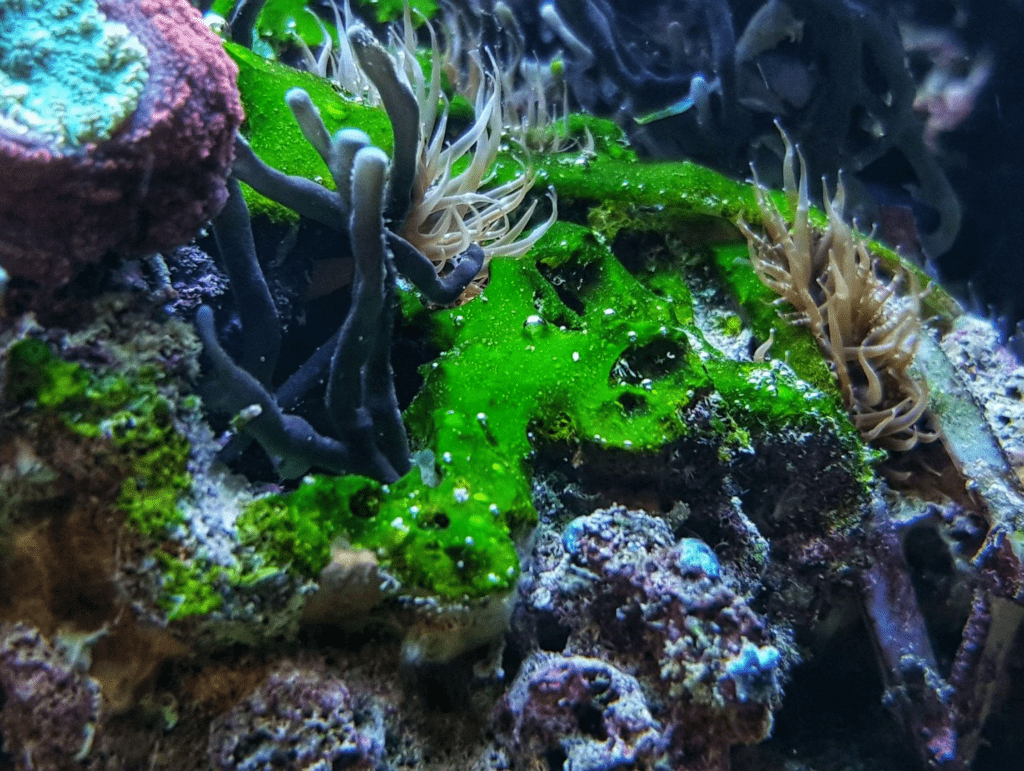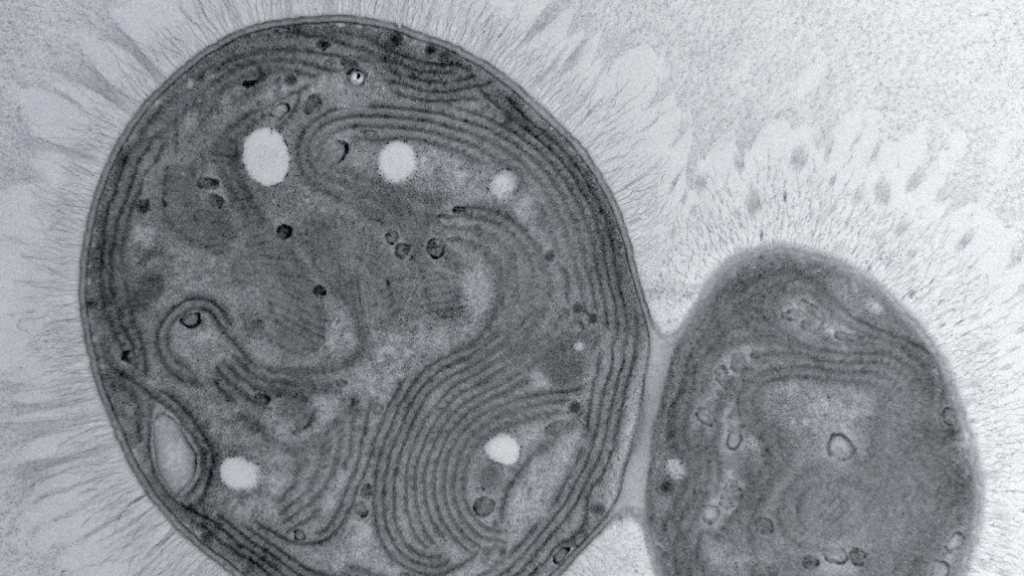A Tiny Solution to a Big Problem
In the realm of climate change solutions, a surprising hero has emerged: a microbe named “Chonkus.” This unique cyanobacteria, discovered by researchers at Harvard University, has the potential to revolutionize carbon capture and sequestration.
The discovery of Chonkus has sparked significant interest in the field of industrial carbon capture due to its unique adaptation to carbon-rich, high-temperature environments, particularly near hydrothermal vents. Unlike many microbes, Chonkus has evolved to thrive in these extreme conditions, allowing it to rapidly consume carbon dioxide (CO₂) and convert it into biomass. This process is particularly valuable for reducing atmospheric CO₂ levels, a leading driver of climate change.
The Unique Habitat of Chonkus
Hydrothermal vents, found along tectonic plate boundaries on the ocean floor, are extraordinary environments where Chonkus thrives. These high-temperature, mineral-laden zones are formed when seawater seeps down into Earth’s crust, is heated by magma, and then rises back to the seafloor, carrying dissolved minerals and gases. Temperatures around these vents can reach up to 400°C (750°F), yet the surrounding water remains liquid due to immense pressure at such depths. This extreme environment is rich in chemicals like hydrogen sulfide, methane, and carbon dioxide, which serve as key energy sources for microbial communities that inhabit these areas.
In this harsh setting, Chonkus has evolved a unique set of physiological adaptations, allowing it to survive and even flourish. Unlike organisms that rely on sunlight for energy, Chonkus and other vent microbes utilize a process called chemosynthesis, where they convert inorganic compounds, including carbon dioxide, into organic matter. This adaptation enables Chonkus to tap into the abundant supply of CO₂ in vent waters, making it an ideal candidate for naturally sequestering carbon. By metabolizing CO₂ and integrating it into its cellular structure, Chonkus not only sustains itself but also contributes to carbon removal.
The life cycle of Chonkus also enhances its carbon sequestration potential. Upon death, Chonkus cells are drawn down by gravity to the ocean floor, where the captured carbon remains locked away in deep-sea sediments. Over time, this biological deposition can contribute to long-term carbon storage, as the deep ocean acts as a carbon reservoir, slowing the release of CO₂ back into the atmosphere.
Moreover, Chonkus operates within a complex, interdependent ecosystem of microorganisms that collectively influence the cycling of nutrients and elements within hydrothermal environments. The synergy between Chonkus and other microbes allows for efficient carbon and mineral cycling, which could have implications for bioengineering applications aiming to enhance carbon capture. Scientists are studying how Chonkus and its microbial neighbors interact, hoping to replicate or adapt these mechanisms in engineered systems designed for carbon capture in industrial settings.
Rapid Growth and Carbon Sink Potential
One of the standout features of Chonkus is its extraordinary growth rate, which allows it to capture and sequester carbon with remarkable efficiency. This rapid growth is a vital trait for any biological system designed for carbon capture, as a faster growth rate directly translates into higher CO₂ absorption over shorter periods. Unlike many other microbes, Chonkus can reproduce quickly in carbon-rich environments, continuously incorporating carbon into its biomass. This process is enhanced by its unique metabolic pathways, which are adapted to handle the high levels of CO₂ near hydrothermal vents, enabling the microbe to thrive in extreme conditions and absorb carbon at an accelerated rate.
As Chonkus cells multiply, they not only trap atmospheric carbon but also contribute to an effective, long-term carbon storage solution. Upon reaching the end of their life cycle, these carbon-rich cells naturally descend to the ocean floor, where they become part of the deep-sea sediment. This descent effectively removes the carbon from the immediate carbon cycle, as the ocean’s depths serve as a long-term carbon sink. This sedimentation process can lock carbon away for thousands of years, keeping it from returning to the atmosphere.
Because of these characteristics, Chonkus holds potential as a bio-based solution to atmospheric carbon reduction. Researchers are exploring how this natural mechanism might be leveraged in controlled, engineered systems for industrial carbon capture. By recreating the conditions that promote Chonkus growth and carbon uptake, scientists aim to harness its rapid cell division and carbon storage capabilities on a larger scale, contributing to innovative approaches for mitigating climate change.
Industrial Applications and Future Potential
Research is underway to explore how Chonkus could be harnessed on a large scale for industrial carbon capture and sequestration (CCS). Current CCS technology relies on expensive chemical processes to capture and store CO₂. In contrast, biological sequestration methods using Chonkus could offer a more sustainable and cost-effective alternative. Potential applications include cultivating Chonkus in bioreactors or carbon-rich industrial waste streams, such as those from manufacturing or power generation, to help offset CO₂ emissions.
Another area of exploration involves genetic modification to enhance the carbon-capturing efficiency of Chonkus, making it an even more effective tool for CO₂ sequestration. Some researchers are also investigating ways to adapt Chonkus for survival in various environments outside of its natural hydrothermal vent habitats, which would enable more flexible deployment in industrial settings.
Benefits and Environmental Considerations
Using Chonkus for carbon capture has distinct advantages, especially when compared to conventional Carbon Capture and Storage (CCS) technologies. Traditional methods of CCS often involve energy-intensive processes or the use of hazardous chemicals to capture CO₂, both of which can have significant environmental and economic drawbacks. In contrast, Chonkus offers a more sustainable alternative as it naturally absorbs carbon without the need for energy-demanding machinery or harmful chemicals. Its unique adaptation to high-CO₂ environments means it can effectively sequester carbon without extensive genetic modification or artificially constructed habitats, reducing costs and lowering ecological risks associated with engineered organisms.
Chonkus’s resilience and efficiency in carbon-rich, high-temperature settings further underscore its suitability for industrial applications, as it can thrive with minimal intervention and in relatively accessible setups. This characteristic not only enhances its carbon-capturing efficiency but also minimizes the resource input required for cultivation.
However, introducing any biological solution for carbon sequestration on a large scale warrants careful consideration of ecological impact. Chonkus, like other microorganisms, could potentially affect surrounding ecosystems if introduced in uncontrolled settings. Scientists are currently studying the byproducts of Chonkus metabolism and the potential influence of its large-scale cultivation on marine and terrestrial biodiversity. Careful management and monitoring of Chonkus in controlled environments are essential to prevent unintended disruptions, such as nutrient imbalances or competition with native microbial species. As such, environmental impact assessments and regulatory oversight will be critical to safely scaling up Chonkus-based carbon capture solutions.
Through continued research and responsible deployment, Chonkus may represent a promising, eco-friendly approach to mitigating atmospheric carbon levels while minimizing the environmental trade-offs typically associated with industrial carbon capture methods.
The Future of Chonkus in Carbon Capture Technology
As climate change mitigation efforts become increasingly urgent, innovative solutions like Chonkus are essential. The integration of this carbon-hungry microbe into carbon capture initiatives could represent a breakthrough in the quest to reduce atmospheric CO₂ levels. With ongoing research, Chonkus could become a core component of sustainable, scalable carbon capture technology, potentially transforming how industries approach their carbon footprints.
While the use of Chonkus for carbon sequestration remains largely experimental, its potential demonstrates the power of harnessing natural processes to address complex environmental challenges. By further understanding and optimizing organisms like Chonkus, scientists and policymakers can work together to create viable pathways toward a more sustainable future.

The Science Behind Chonkus
- Rapid Growth: Chonkus exhibits exceptional growth rates, particularly in carbon-rich conditions.
- Carbon Sequestration: The microbe efficiently captures and stores carbon dioxide, contributing to reduced greenhouse gas emissions.
- Heat Tolerance: Its ability to withstand high temperatures makes it suitable for industrial settings.
- Potential for Biofuel Production: Chonkus can be utilized to produce biofuels, further reducing reliance on fossil fuels.
The Broader Picture: Microbes as Climate Champions
Microorganisms like Chonkus demonstrate the vast potential of microbial life to aid in climate change mitigation efforts. Chonkus thrives in carbon-rich hydrothermal vent environments, efficiently sequestering CO₂ by incorporating it into its biomass, which eventually settles on the ocean floor. Similarly, other microbes offer unique mechanisms for carbon management. For instance, certain cave bacteria have shown the ability to rapidly crystallize carbon—a process that would otherwise take thousands of years. This crystallization capability could be applied to lock carbon away in solid, stable forms for extended periods, helping reduce atmospheric CO₂ levels.
Algae also stand out as promising agents for sustainable biofuel production. Through photosynthesis, algae convert CO₂ into biomass, which can then be processed into biofuels, offering an alternative to fossil fuels. Cultivating algae for energy purposes not only supports carbon capture but also helps shift our energy dependence away from carbon-intensive sources. These diverse microbial solutions illustrate the innovative ways that biological processes can contribute to reducing greenhouse gas emissions, paving the way for eco-friendly approaches to tackling climate change.

The Future of Microbial Solutions
By harnessing the power of microbes, we can develop innovative and sustainable solutions to combat climate change. These microscopic organisms offer a promising avenue for carbon capture, biofuel production, and other environmental applications.
As we face the challenges of a warming planet, it’s crucial to explore all potential solutions, including those offered by the natural world. By understanding and leveraging the capabilities of microbes like Chonkus, we can work towards a more sustainable future.
Related Content
- Scientists found a new ally in the fight to clean up CO2 emissions
- A Disappearing Symphony – How Modern Life is Silencing Essential Microbes in Our Guts
- How AI is Revolutionizing Healthcare by Analyzing the Gut Microbiome and Its Impact on Mental Health
- Ecological Crisis Escalates: Microbead Pollution Threatens Coastal Ecosystems Worldwide
- Unraveling the Depths: The Intricate Interplay of Climate Change, Ocean Microbes, and Greenhouse Gas Dynamics
- High Pesticide Use in Costa Rica: A Call for Sustainable Farming
- The Largest CO2 Vacuum Cleaner in the World: Tackling Climate Change with Innovation
- Meet ‘Chonkus,’ the Algae Trying to End the Climate Crisis
- New ‘Chonkus’ algae strain can help our planet – here’s how
- Harvard Scientists Discover ‘Chonkus,’ Algae That Sinks Carbon for a Greener Planet

